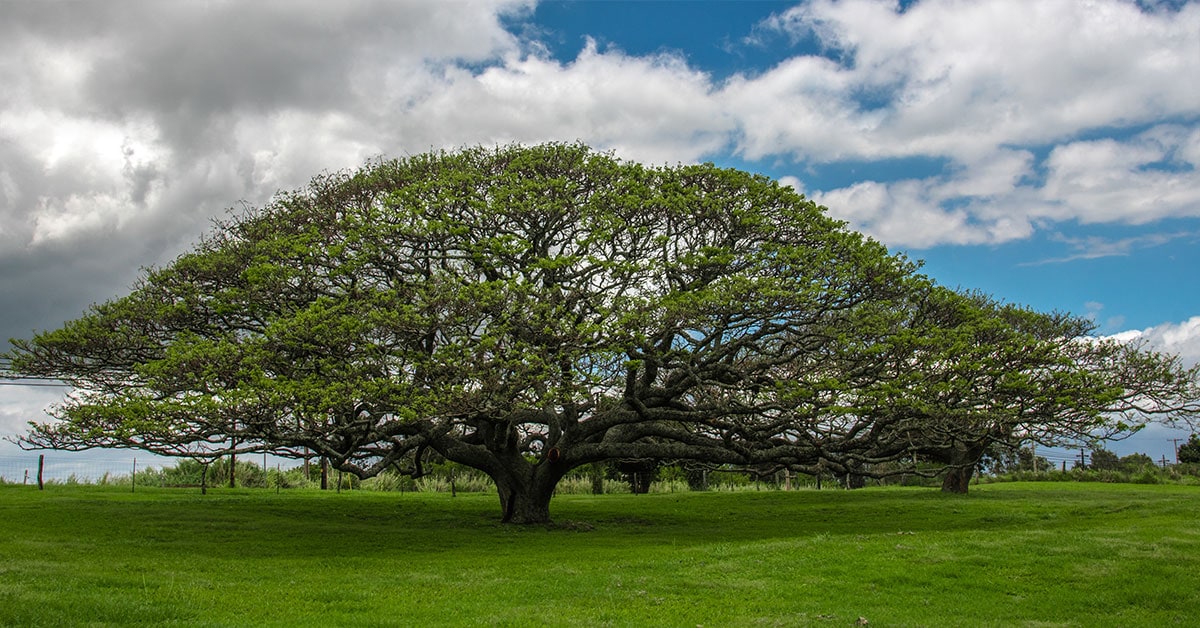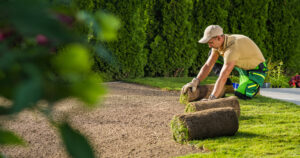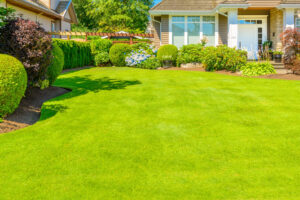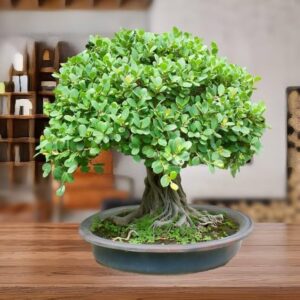Ever wondered how old that towering tree in your yard might be? Our Tree Age Calculator helps you estimate the age of a tree quickly and easily based on its trunk circumference and species. By measuring the circumference at breast height (CBH) and applying a growth factor specific to the tree species, you can calculate its approximate age in just a few steps. This tool is perfect for tree enthusiasts, gardeners, and homeowners who want to learn more about their trees and ensure proper care. Simply enter your tree’s details below to get started on uncovering its history!
Tree Age Calculator
Use this calculator to estimate the age of a tree based on its circumference and the tree species’ growth factor.
| Enter Circumference at Breast Height: | |
| Select Tree Species: | |
| Estimated Tree Age (years): |
| Advance Tree Age Calculator | |||||
|---|---|---|---|---|---|
| Tree Species: | |||||
| Calculation Method: | |||||
| Trunk Diameter at Breast Height (cm): | |||||
| Growth Environment: | |||||
| Climate Zone: | |||||
| Estimated Tree Age: | 0 years | ||||
| Approximate Year of Germination: | 0 | ||||
| Age Confidence Level: | Medium | ||||
|
|||||
|
|||||
How to Use the Tree Age Calculator
Using our Tree Age Calculator is quick and easy! Simply select your tree species and input its circumference or diameter to find out its approximate age.
Let’s say you have a red maple with a circumference of 6 feet 3 inches, equivalent to 2 feet in diameter. Follow these simple steps:
- Start by selecting “Red Maple” from the tree species drop-down menu.
To calculate age using circumference:
- Choose the appropriate unit for circumference at breast height (CBH). In this case, select feet/inches.
- Input the circumference — enter 6 in the feet box and 3 in the inches box.
The calculator will display the diameter at breast height (DBH) — 61 cm — and your tree’s age — 107 years. You’ve got yourself a centenarian tree!
To calculate using diameter:
- Select the unit for DBH (feet/inches).
- Input your tree’s diameter of 2 feet into the box.
If your tree species isn’t listed, simply enter the growth factor (usually 3, 4, or 5) to get the results.
Additionally, if you want to estimate your tree’s birthday, you can use our date calculator to convert its age into days. Just input today’s date and the tree’s age to get an approximate birthday!
Tree Growth Factor Chart — The Smaller, the Faster!
Our tree growth factor chart helps not only in calculating your tree’s age but also in understanding the growth rate. The smaller the tree growth factor, the faster the tree grows. Check out our tree spacing calculator for guidance on proper tree planting distances.
| Tree Species | Growth Factor |
|---|---|
| American beech | 6 |
| American elm | 4 |
| American sycamore | 4 |
| Austrian pine | 4.5 |
| Basswood | 3 |
| Black cherry | 5 |
| Black maple | 5 |
| Black walnut | 4.5 |
| Black willow | 2 |
| Box elder | 3 |
| Bradford pear | 3 |
| Common horse chestnut | 8 |
| Colorado blue spruce | 4.5 |
| Cottonwood | 2 |
| Dogwood | 7 |
| Douglas fir | 5 |
| European beech | 4 |
| European white birch | 5 |
| Green ash | 4 |
| Honey locust | 3 |
| Ironwood | 7 |
| Kentucky coffee tree | 3 |
| Littleleaf linden | 3 |
| Northern red oak | 4 |
| Norway maple | 4.5 |
| Norway spruce | 5 |
| Pin oak | 3 |
| Quaking aspen | 2 |
| Redbud | 7 |
| Red maple | 4.5 |
| Red pine (Norway pine) | 5.5 |
| River birch | 3.5 |
| Scarlet oak | 4 |
| Scotch pine | 3.5 |
| Shagbark hickory | 7.5 |
| Shingle oak | 6 |
| Shumard oak | 3 |
| Silver maple | 3 |
| Sugar maple | 5.5 |
| Sweetgum | 4 |
| Tulip tree | 3 |
| White ash | 5 |
| White fir | 7.5 |
| White oak | 5 |
| White pine | 5 |
| Yellow buckeye | 5 |
With this chart, you can easily compare different tree species and their respective growth rates. The lower the growth factor, the quicker your tree is expected to grow!
Example 1: Determining the Age of an Oak Tree
Let’s say you have a magnificent Northern Red Oak in your backyard, and you’re curious about its age. Using the tree age calculator, you can estimate its age with just a few measurements and simple inputs. Here’s how you do it step by step:
Measure the Tree’s Circumference at Breast Height (CBH):
The first step is to measure the circumference of the tree at breast height, which is 4.5 feet (about 1.3 meters) from the ground. This is a standard height used by arborists and scientists to measure tree diameters. In this case, you take a flexible measuring tape and wrap it around the trunk of your Northern Red Oak at that height. Let’s say you find the circumference to be 8 feet.
Convert Circumference to Diameter:
Once you have the circumference, the next step is to convert it to diameter. You can do this using the formula:

Using a value of π (approximately 3.14), divide the circumference (8 feet) by π:

So, the diameter at breast height (DBH) of your tree is around 2.55 feet, or approximately 30.6 inches.
Input the Diameter and Tree Species into the Calculator:
With the diameter calculated, head to the tree age calculator and select “Northern Red Oak” from the list of tree species. Each species has a specific growth factor, which is a number used to estimate a tree’s age based on its diameter. For Northern Red Oak, the growth factor is 4.
Calculate the Age of the Tree:
The tree age calculator will multiply the diameter (in inches) by the growth factor for Northern Red Oak. In this case, the calculation is as follows:

So, your Northern Red Oak is approximately 122 years old! That’s nearly a century and a quarter of standing strong.
This example shows how easy it is to determine the age of your oak tree with just a simple measurement and a few clicks in the tree age calculator.
Example 2: Estimating the Age of a Maple Tree
Now, let’s imagine you have a beautiful Red Maple tree growing in your front yard, and you’re curious to know how old it is. Unlike the previous example, this time you’ll measure the diameter directly instead of the circumference.
Measure the Tree’s Diameter at Breast Height (DBH):
If you have access to the diameter measurement tools or already know the tree’s diameter, you can directly input it into the tree age calculator. Let’s assume you measure the diameter at 20 inches. This is the width of the tree’s trunk at 4.5 feet (breast height) above the ground.
Select the Tree Species in the Calculator:
After measuring the diameter, go to the tree age calculator and find “Red Maple” in the list of tree species. The Red Maple has a growth factor of 4.5. This growth factor helps account for how fast Red Maples typically grow, allowing the calculator to estimate the tree’s age based on its diameter.
Input the Diameter and Calculate the Age:
After selecting Red Maple from the list, enter the diameter of 20 inches into the calculator. The calculator will now multiply the diameter by the growth factor for Red Maple (which is 4.5) to estimate the age.
The formula looks like this:

So, your Red Maple is approximately 90 years old. That’s almost a century of growth, offering shade, beauty, and environmental benefits for decades.
What If You Don’t Know the Tree Species?
Suppose you can’t identify the tree species but still want to estimate the age. The tree age calculator offers an option to enter a generic growth factor. Most tree species have growth factors in the range of 3 to 5. If you suspect your tree grows fast, you might choose a smaller growth factor (closer to 3), while a slower-growing tree might have a growth factor of 5 or higher. Simply multiply the diameter by the average growth factor to get an approximate age.
Understanding the Importance of Knowing Tree Age
Estimating the age of your trees isn’t just about curiosity. Knowing the approximate age of your trees can provide important information for several reasons:
- Tree Health: Older trees can be more susceptible to diseases, pests, and structural weaknesses. Knowing the tree’s age can help you understand what kind of maintenance it might need to keep it healthy.
- Historical Significance: If your tree has been standing for over a century, it may have historical value. Some communities preserve ancient trees as landmarks or for their ecological importance.
- Planning and Landscaping: The age of a tree can influence landscaping decisions. For instance, an older tree may not have the same growth potential as a younger one, so you may need to plan accordingly when planting nearby trees or adding structures.
By using the tree age calculator, you can easily determine the age of your trees and make informed decisions about their care and role in your landscape. Whether you have towering oaks or vibrant maples, understanding their age is a step toward ensuring their health and longevity.
FAQs
Do trees die of old age?
Yes, trees can die of old age. As they grow older, their ability to maintain themselves diminishes. Over time, the tree allocates more of its energy to respiration rather than growth, making it susceptible to diseases, pests, and environmental factors. This leads to a decline in health and eventually, the tree may die and become a snag.
How can I identify fast-growing trees in my area?
You can easily determine fast-growing trees using the tree growth factor chart. The smaller the growth factor, the faster the tree grows. This chart can be helpful in identifying which species are best suited for rapid growth in your region.
How do I calculate the age of an oak tree by its diameter?
To calculate the age of an oak tree based on its diameter, follow these steps:
- Measure the tree’s diameter at breast height (dbh) in inches.
- Multiply the diameter by the species’ growth factor.
For example, if a pin oak has a diameter of 3 feet, or 36 inches, multiply it by its growth factor of 3. The tree would be approximately 108 years old.
How do I count tree rings to estimate its age?
Tree rings are a reliable method for determining age. Each dark ring on the tree trunk represents one year of growth, caused by seasonal changes. To estimate the age, simply count from the innermost dark ring to the outermost ring. This total number represents the tree’s age in years.
What is the best way to measure the circumference of a tree?
To measure the circumference of a tree, use a measuring tape and wrap it around the trunk at 4.5 feet (1.37 meters) above the ground. This height is known as “breast height” and provides a standard measurement point for determining tree age and size.
Can a tree’s age affect its value?
Yes, a tree’s age can significantly impact its value. Older, mature trees often contribute more to a property’s aesthetic and environmental value, making them more valuable. Additionally, certain tree species gain value as they age due to their rarity or size.
What factors influence a tree’s growth rate?
Several factors can influence a tree’s growth rate, including species type, climate, soil quality, and access to water and sunlight. Fast-growing species like cottonwood or black willow tend to have smaller growth factors, while slower-growing trees like oaks have larger growth factors.
Can I estimate the age of a tree without cutting it down?
Yes, you can estimate a tree’s age without cutting it down by measuring its diameter at breast height and using the species’ growth factor. This method provides an approximation of the tree’s age, without the need for invasive techniques.
What are the growth factors for popular tree species?
Growth factors vary by species. For example, the growth factor for a red maple is 4.5, while a faster-growing cottonwood has a growth factor of 2. Refer to a tree growth factor chart to find the specific growth factor for the species you’re interested in.
Is it possible to extend the lifespan of an aging tree?
Yes, proper care can extend the lifespan of an aging tree. Regular pruning, proper watering, and disease control can help maintain the health of an older tree. Consult a professional arborist to assess the condition of the tree and recommend appropriate actions.






